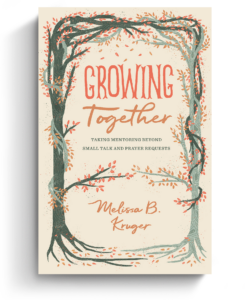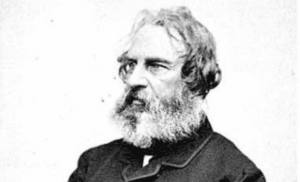Matt Sweetman moved to Chicago with his wife and two boys in April 2009 to plant Destination Church. After nearly a year and a half of meeting together as a church, expectations weren’t meeting reality. “I expected more growth and higher assimilation,” Sweetman told me. “I expected people to bring more people. I didn’t expect as many people to come and go as they have. Even though everything I read and everyone I spoke to told me to expect that, I still didn’t.” Aaron Youngren, who began planting The Line in January 2009, had a similar experience when he was first trying to get people interested in the vision God gave him. “We would come to Chicago,” Youngren said, “and cast a vision for what we wanted to do, and almost everyone who heard it would love our plan.” He dreamed of throngs buying in:
We thought we were going to take over Chicago, that our church would be the “Cinderella story,” that our church would go into Chicago and explode in every way, in growth, in sanctification, in godliness, in new and wonderful methodology. It’s a joy to recount this because that story just obviously doesn’t glorify God.
Many planters, it seems, are like Sweetman and Youngren. Whether they express it openly or not, they dream of immediate buy in for the church from a massive number of people, both Christian and non-Christian. When it doesn’t work out that way, the rude awakening comes crashing in like a wrecking ball to destroy each expectation. Both Youngren and Sweetman said that Tim Keller is one of their church-planting heroes. Could it be that these grand visions come from looking at men like Tim Keller and Mark Driscoll, believing they could be just like one of their heroes?
The Planter’s Great Awakening
Ed Stetzer, vice president of LifeWay research, recently started a series on his blog called Top Issues Church Planter’s Face. Stetzer, who has planted several churches, says he was “young and confident at a delusional level.” Matt Chandler’s message at the 2008 Resurgence national conference clarifies the nature of many pastors’ confidence. One of the first things preachers must “put to rest are thoughts of bigness.” Chandler said:
Everybody wants to be the next Driscoll, Piper . . . everybody wants to be the guy most downloaded on iTunes, the guy that gets to speak at conferences.
Planters may be particularly prone to this desire. Their ambition and zeal erupts in visions of being the guy who takes the city by storm, sees hundreds of conversions, strikes the hearts of the most unreachable urbanites with the gospel, and does it differently so everyone else needs to come to him for the answers, the messages, and the books. These dreams come from the bravado of a planter who has yet to be humbled by God’s matchless, perfect timing.
If planters do enter where God has called them with this attitude, they could be in for a rude awakening, as illustrated by Sweetman and Youngren. However, this rude awakening becomes a truly great awakening for the planter, because he realizes in that moment he must start thinking of God as the planter, waterer, and grower of the church. After coming to this realization, Youngren says his expectations shifted. He may still have church planting heroes, but their loud, almost hypnotic voices have been reduced to whispers.
Not Always Famous
If this isn’t convincing, at least understand that Driscoll and Keller had to go through their fair share of hardships and growth. Do you remember the days when you didn’t know and refer to them by only one name, like famous athletes or musicians? We are so quick to forget that there was a time, unlike Jesus, when Driscoll and Keller were not. For some reason it is easy to catch a church planter at the pinnacle of his so-called success (as measured by church size, conference speaking, and book writing) and assume that it has always been that way for him.
Driscoll writes in his book Confessions of a Reformissional Rev. that in the first year the church fluctuated from anywhere between 60 to 200 people, leveling out at 100 to 150. Granted, many church plants would be thrilled to have these numbers within their first year. But I think it is important to recognize that Mars Hill did not explode the way the church did in Acts 2 or the way many young planters assume their church will because they are marginally cool and love Jesus, their city, and the people. Furthermore, it is important for young planters to recognize that even someone like Driscoll experienced phases of “slow plodding” in the early years, which included some very difficult lessons learned. For example, he mentions that within months of the Mars Hill’s birth “the church had already lost sight of our mission” (p. 82). Elsewhere he writes that he attempted to hire a part-time secretary, but neglected to write up a formal job description, conduct a formal interview, or hold regular evaluations, which led to frustrations for both him and the secretary (p. 83).
For Keller, the plodding looked a little different. Today I can tell any friend who visits or lives in New York City about the megachurch that is Redeemer. I can give brief facts—that Keller planted the church in the late 1980s, that it grew quickly, that he appeals to an intellectual audience, that he has written New York Times best-selling books, that many consider him the pope of church planting, and that he could probably convert the most hardened atheist without breaking a sweat or raising his voice. However, how many of us know about the months, even years, of work and providence it took for Keller to even begin planting Redeemer? In a 2009 Christianity Today profile of Keller, Tim Stafford writes that Keller first began by learning from urban missiologists while teaching at Westminster. Then, as Manhattan became a prospect, Stafford says “Keller began talking to anyone who would sit still, asking questions he had learned from the urbanists at Westminster: ‘What would be a New Yorker’s worst disaster?’ and ‘What kind of church would a New Yorker want to attend?’ For months he sat in restaurants, learning New Yorkers’ ways.”
Plant With Christ’s Name in Mind
Years of ministry, labor, pain, joy, heartache, learning, listening, preaching, and praying take place for even those planters the rest of us eventually recognize as successful. It is wonderful for planters to have heroes, but like anything else, heroes can become idols. For the planter, the idols must be shattered while the heroes still remain inspiring. If he harbors visions of grandeur, he must go through the rude awakening to get to his great awakening. He must learn that Driscoll’s context is particular to Seattle, that Keller’s context is particular to New York. Could you imagine Driscoll planting Redeemer or Keller planting Mars Hill? Each planter must stay rooted in Scripture and find how God wants to speak through him in his particular context. When that happens, you will not need to be the next Driscoll or Keller because you will be truly who the Lord Jesus Christ wants you to be as an undershepherd of his people in the church he is building for the sake of his name and his glory.
Involved in Women’s Ministry? Add This to Your Discipleship Tool Kit.
 We need one another. Yet we don’t always know how to develop deep relationships to help us grow in the Christian life. Younger believers benefit from the guidance and wisdom of more mature saints as their faith deepens. But too often, potential mentors lack clarity and training on how to engage in discipling those they can influence.
We need one another. Yet we don’t always know how to develop deep relationships to help us grow in the Christian life. Younger believers benefit from the guidance and wisdom of more mature saints as their faith deepens. But too often, potential mentors lack clarity and training on how to engage in discipling those they can influence.
Whether you’re longing to find a spiritual mentor or hoping to serve as a guide for someone else, we have a FREE resource to encourage and equip you. In Growing Together: Taking Mentoring Beyond Small Talk and Prayer Requests, Melissa Kruger, TGC’s vice president of discipleship programming, offers encouraging lessons to guide conversations that promote spiritual growth in both the mentee and mentor.

































